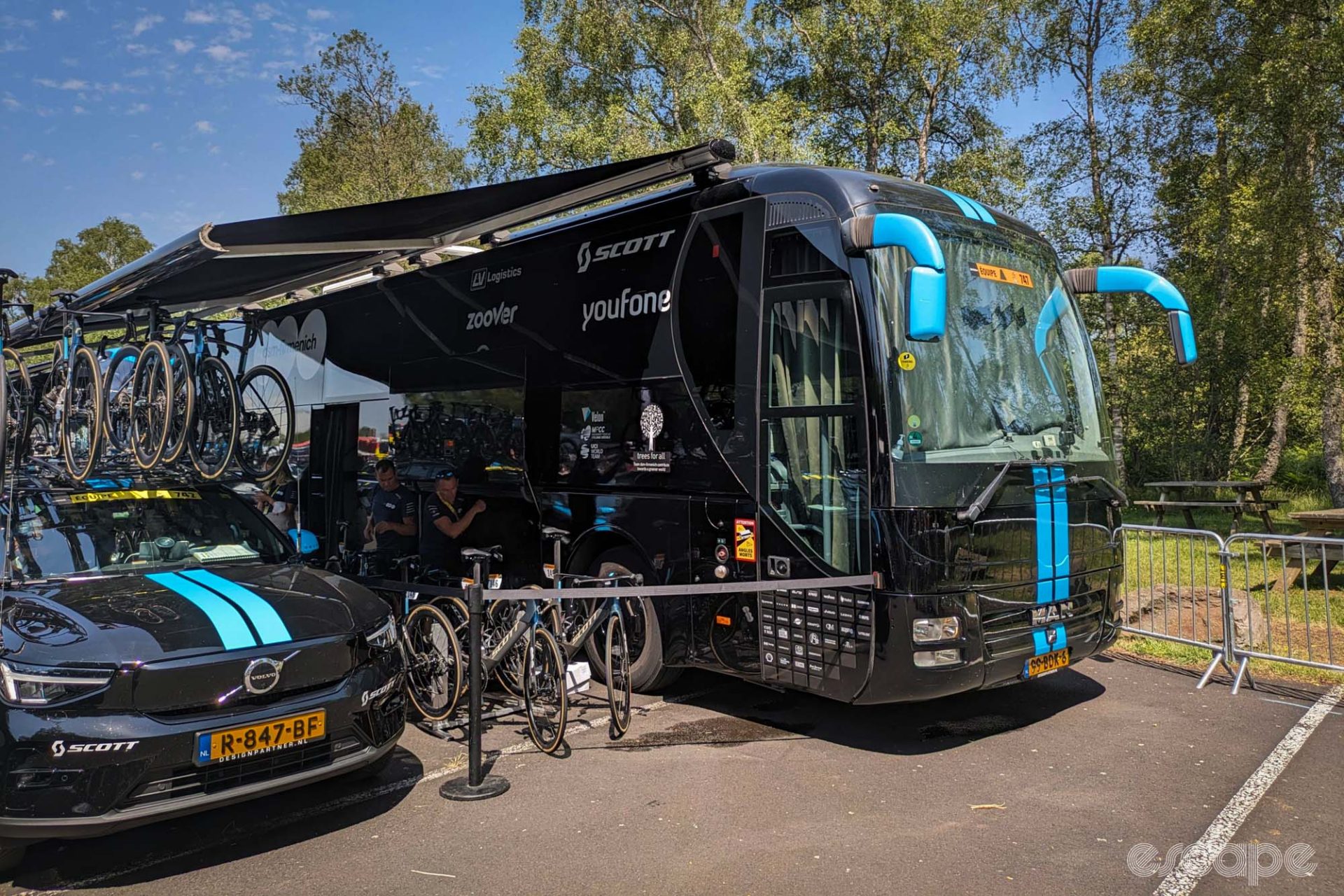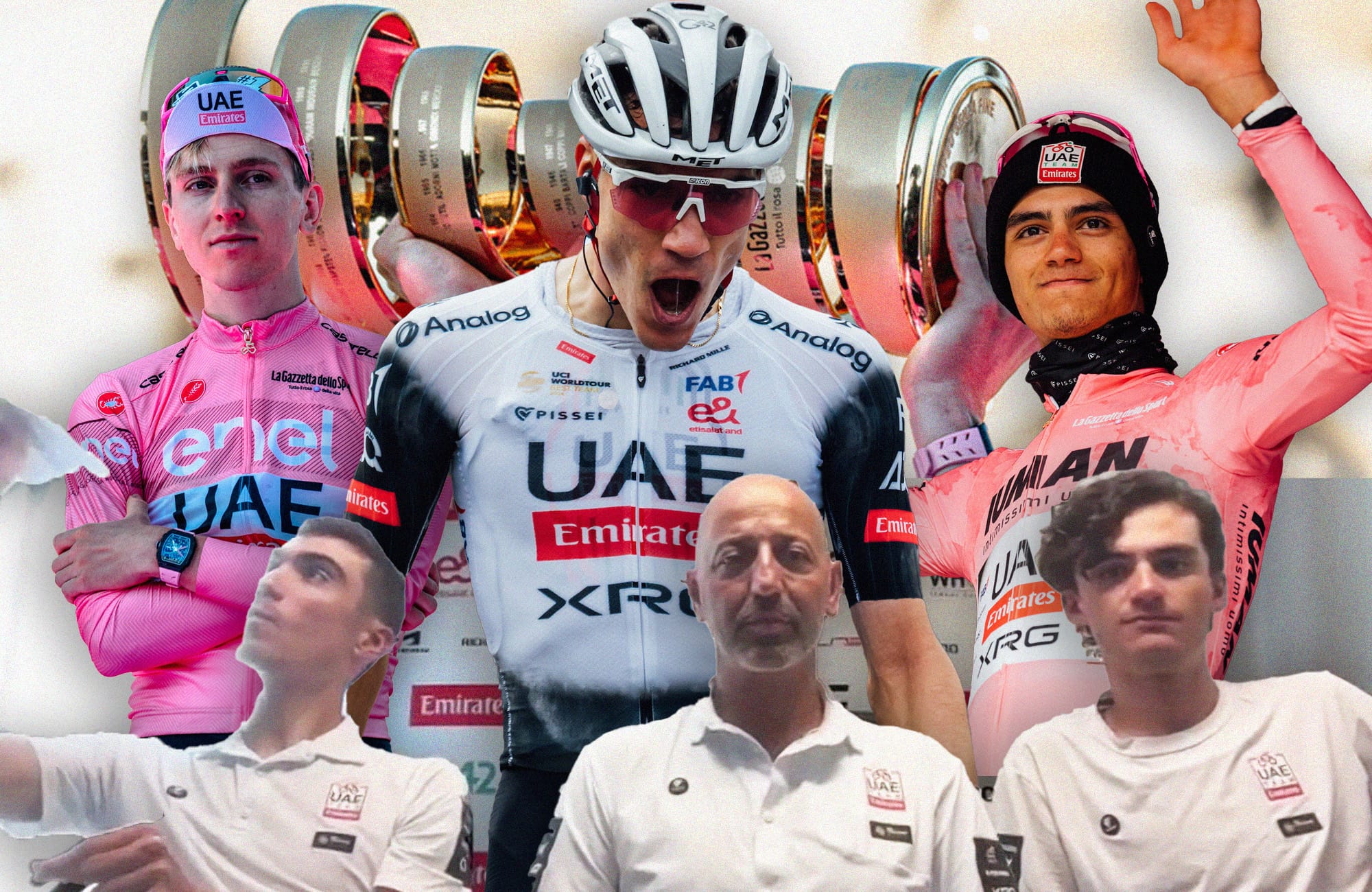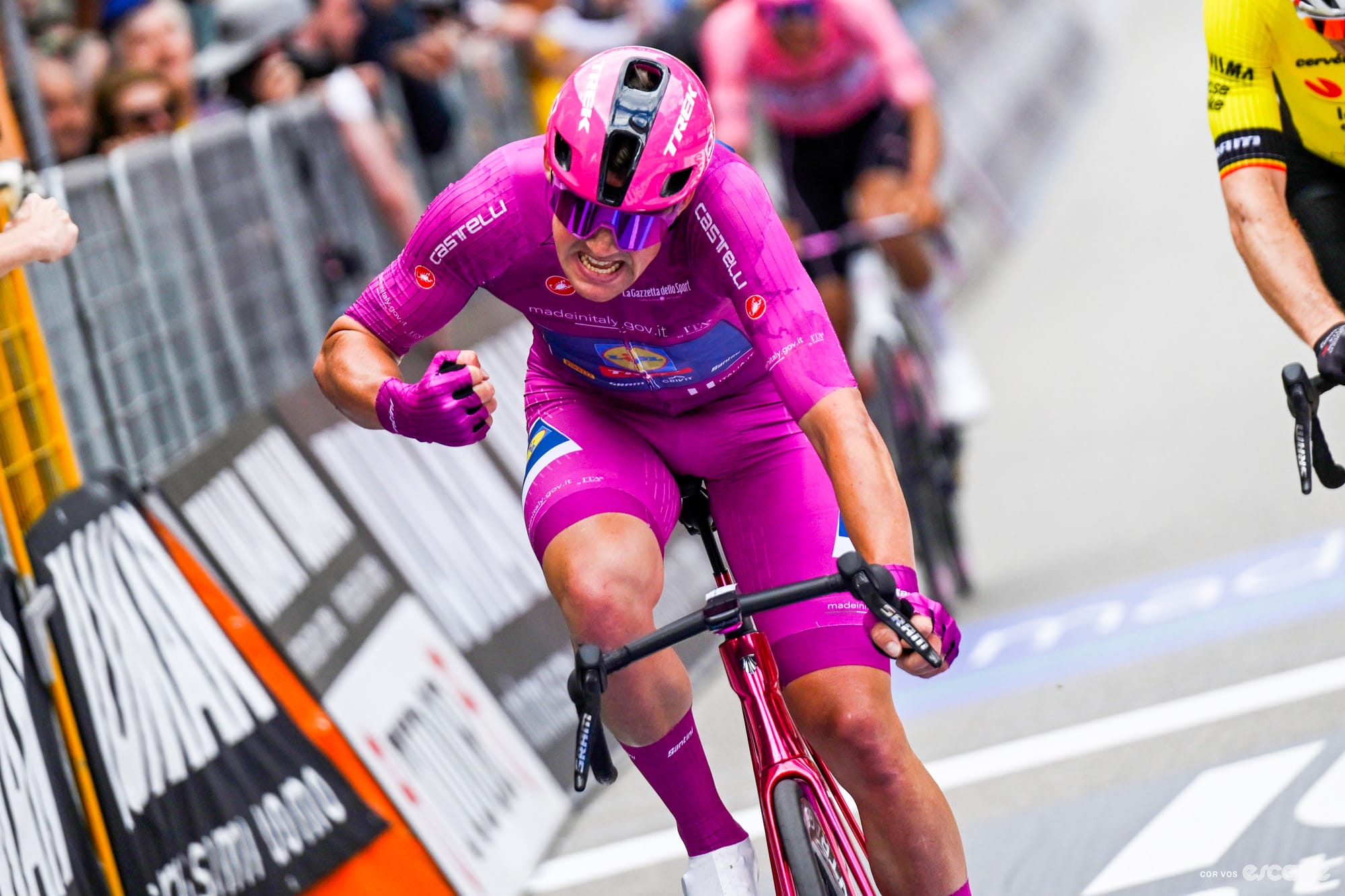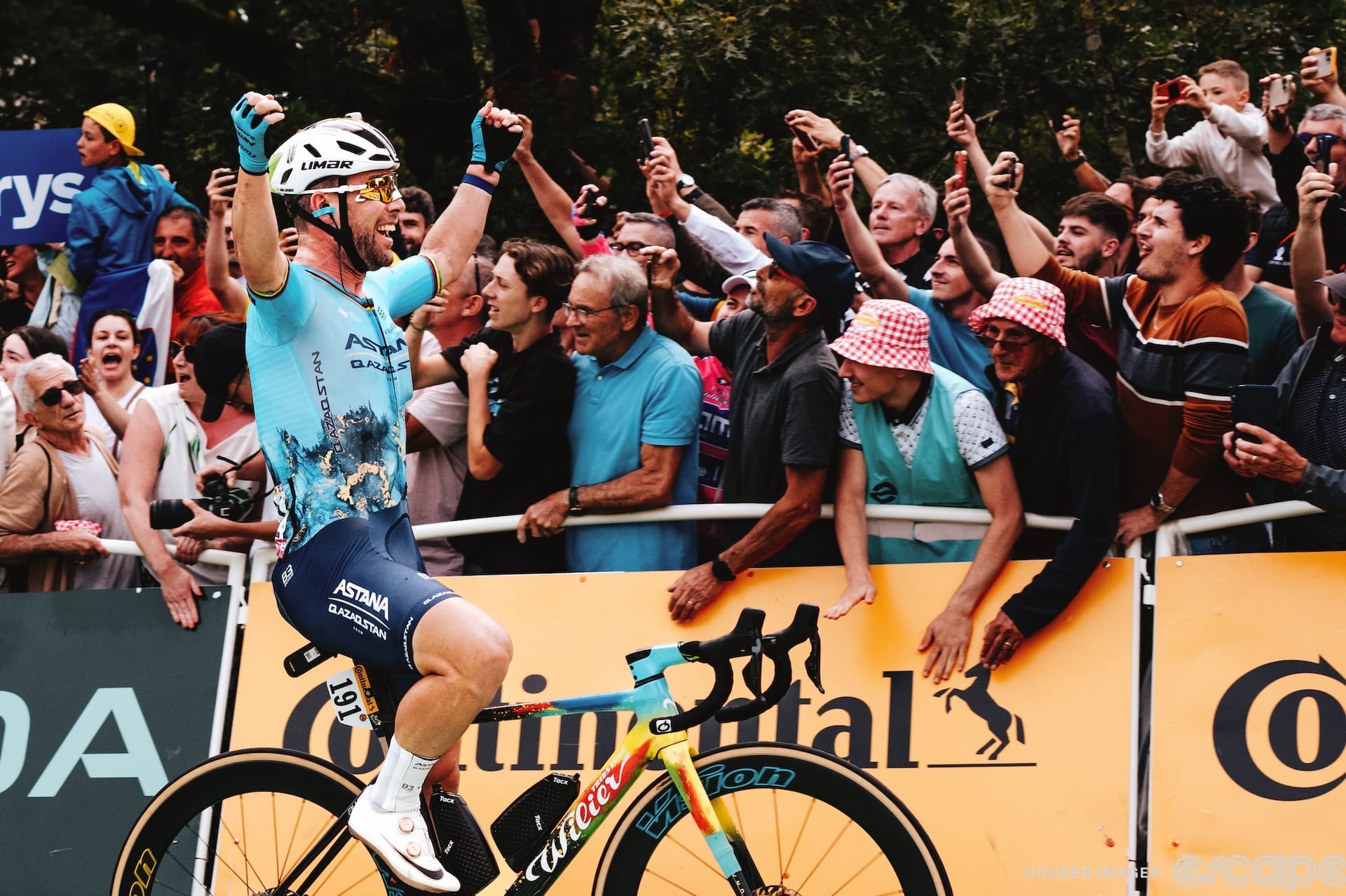Imagine, if you will, being behind the big wheel of 15 tons of precision automotive engineering. Behind you are eight tired, hot, and hungry bicyclists. Depending on how their day panned out, maybe they are extremely boisterous, and maybe they are extremely cross. In either scenario they have immediate needs – rest and recovery. Now add thousands of spectators wandering around with wildly varying degrees of awareness, 176 riders, 21 other team buses, a minimum of 44 team cars, and put it all on the narrow streets of a French small town.
That is the scenario that faces the bus driver at the Tour de France.
A particularly striking example came on stage 8 into Limoges – the one that Mads Pedersen won, what feels like several millennia ago now – which, in addition to having an extremely congested team bus area, also positioned some of those buses around a tight 90 degree corner, onto another street with more team buses. Team DSM-Firmenich was one of the ones that drew the short straw: rather than having to simply run the gauntlet of a straight drive out through hundreds of oblivious people looking the other way, their team bus needed to navigate bollards and a car parked on a corner to get onto another narrow street. But there was a problem: another bus was parked right at the natural point of that arc.
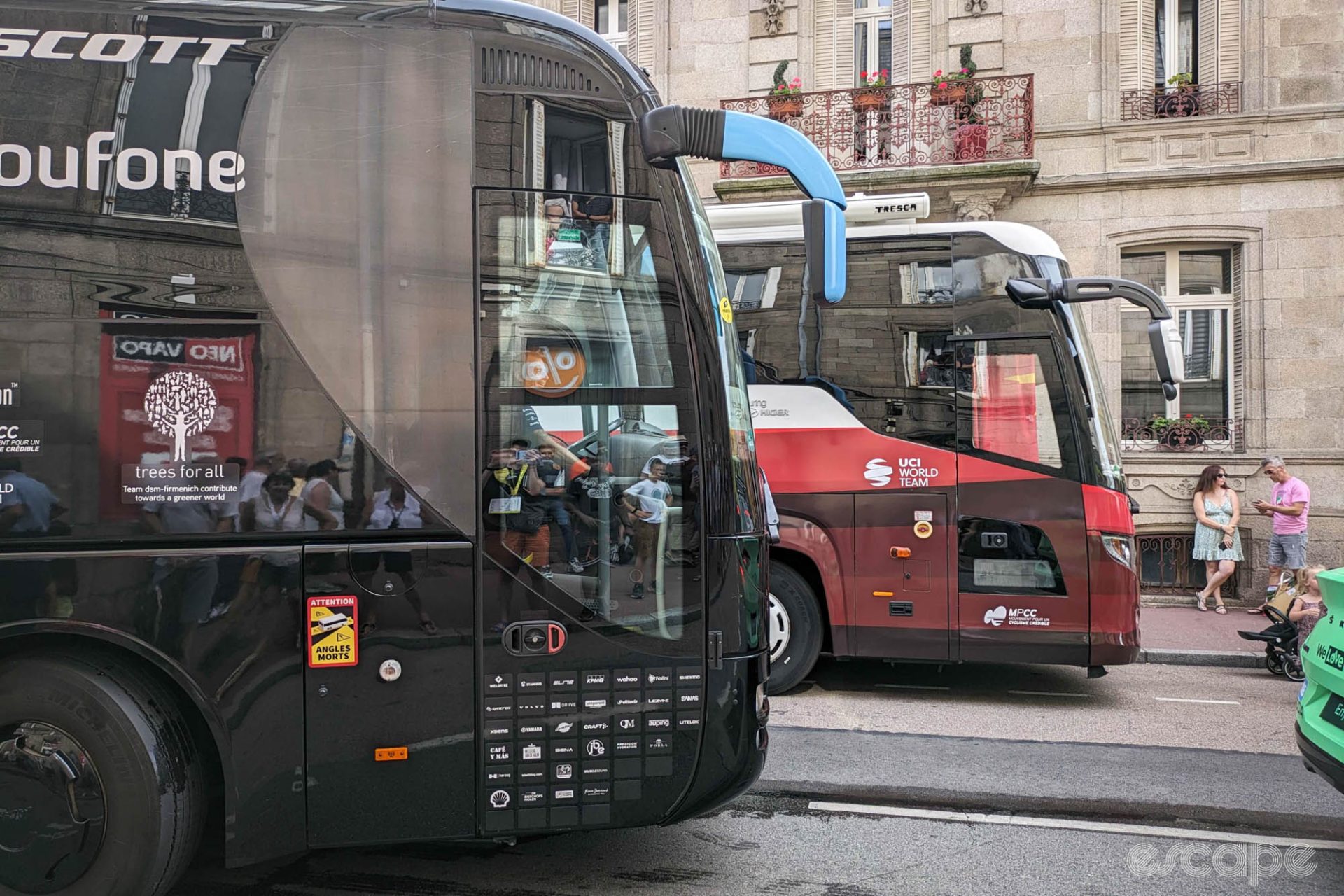
The first sign something was wrong was a loud yell behind me. The side view mirror of the DSM-Firmenich bus – extending out of the front like ears on a cocker spaniel – was centimetres away from lovingly tapping the passenger windows of the Cofidis bus. Something very crunchy and expensive seemed inevitable – so I did what needed to be done. “I’ll be late back to the press room,” I texted my colleagues on WhatsApp. “Watching the DSM bus trying not to crash.” Then I just stood there and watched until things resolved, for better or worse.
For five minutes or so, the full spectrum of humanity was on display. There was a spectator of advancing years who confidently walked between the buses and then attempted to instruct the DSM driver on how to turn the corner, in the way that only older men can do. At one point, Cofidis’s sprinter Bryan Coquard tried to pass his baby through the window to the DSM bus driver. But perhaps my favourite image in this mental slideshow was a DSM staff member standing in the steps of the bus, looking out, melancholically sucking on an icypole.
Eventually, somehow, the DSM bus reversed back down the street into a swarm of spectators. No one got squished, and no buses got destroyed. But it did spark a thought: is this just a normal day, or an extra-especially stressful one? What does a day in the life of the team bus driver look like?
Finally, after five days of trying and failing to secure an interview, I spoke to the DSM bus driver prior to the start of stage 11 in Clermont-Ferrand. He’s a Frenchman called Vincent Moreels, who’s been with the team since the start of the year, and working in the cycling space prior as the driver for the now-defunct B&B Hotels.
A day in the life of a Tour bus driver, Moreels told me, involves more than just driving – he also takes on duties that are closer to soigneur. “First we have to check the road to bring the riders to the start, and take care of the aircon, the drinks in the bus,” he said, running me through his day. The morning before when I’d tried to speak with him, he had been too busy running around with ice vests to put on the riders while they warmed up and prepared for a tense day on rolling terrain.
“After the start, we go to the finish,” Moreels said, a journey that can range from 30 minutes to more than two hours, depending on the route. "At the finish we wait, we put the rollers out for the cooling down, prepare the shower, the recovery food, and after that we go to the next hotel.”
This is a cycle that repeats – not just for the length of a Grand Tour, but in approximate terms for the entirety of the cycling season. Moreels' first race was February's Volta ao Algarve – a 2,000-kilometre, 2.5-day drive from the DSM service course in Deventer, in the middle of the Netherlands. His season will finish at il Lombardia in Italy in early October, and over the course of a typical year he’ll be behind the wheel for 40,000-50,000 kilometres – as much or more than circling the equator.

Crashes are rare – he’s a professional, after all – but at finish towns is where things get most fraught. “Sometimes when we arrive, the parking is more or less empty. We park the bus, and one moment later it’s full of cars coming and sometimes you don’t have enough space for the cars … and yeah, it [causes] some trouble,” Moreels said, ominously.
Having seen him avoid an impact in extremely difficult conditions in Limoges, I was intrigued to learn whether that was a particularly challenging day on the road. “This day was stressful for me,” Moreels admitted, smiling. “Because all [these] people were waiting with their phone for me to make a mistake.” He breathed out forcefully, a kind of ‘whooo!’ noise. “It was crazy.”
Did Bryan Coquard and his baby help or hinder matters? Moreels laughed. “No-no-no, I know him. It was friendly. We worked in the B&B Hotel concept for a few years – four years, I think – and we had only one bus [ed. DSM has three – two for the men’s team, one for the women’s] so I did all season with him. Yeah, I know a little bit his family and he wanted to show me [his child] ... but that was not the moment.” More laughter.
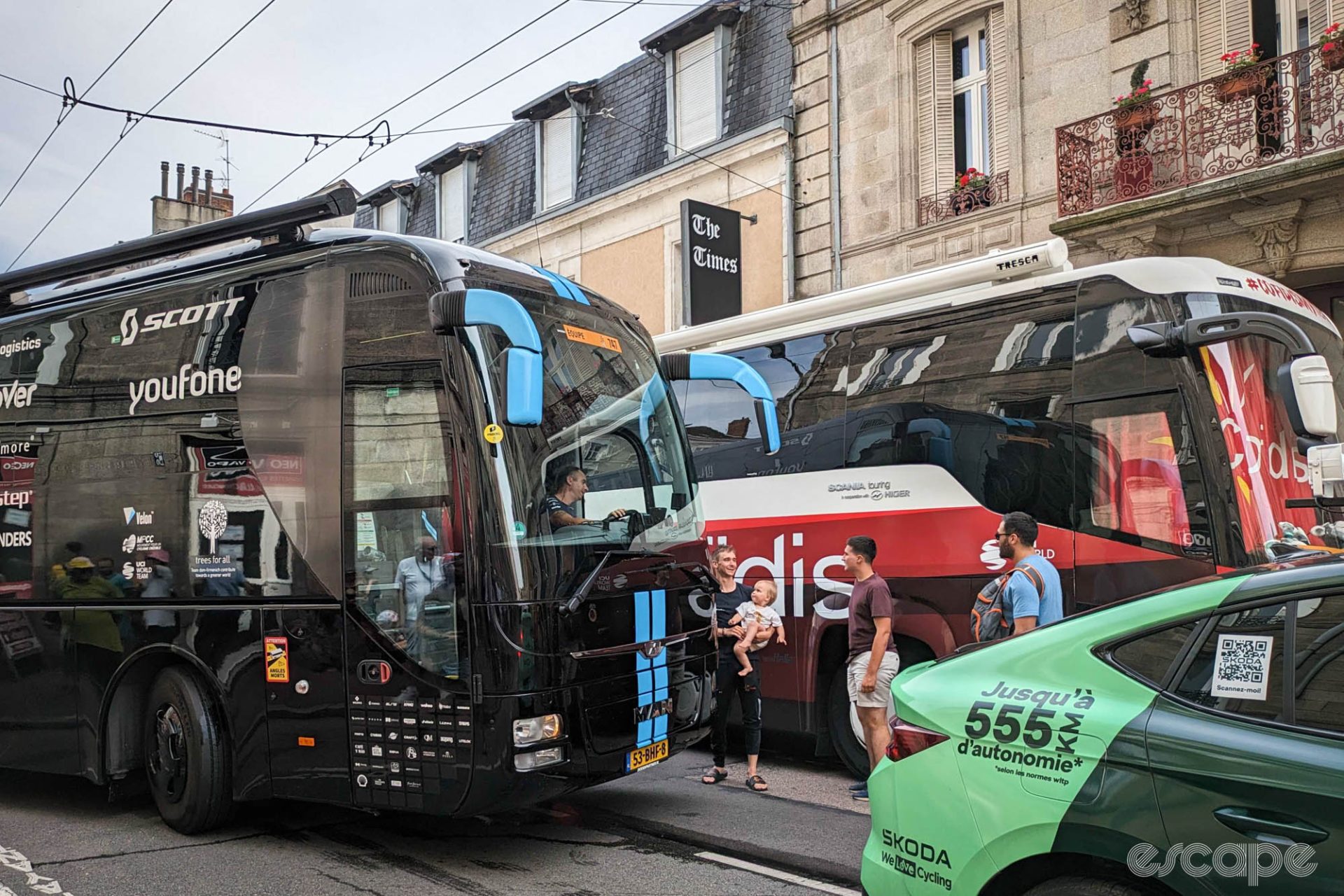
Having seen him in action, it was clear that Moreels' role was greater than just conveying the riders from one destination to the next. When I’d asked about whether the riders were anxious at stage starts or angry at stage finishes, he’d referred to the bus as a “calm space,” a kind of haven from the pressure of the race, rather than a part of it. “Today, before the start, it’s quiet – and once they go down it’s a lot of a people asking for the pictures, the signatures.”
Standing around the bus as we spoke were fans waiting for a pre-crash, pre-departure Romain Bardet, screaming at any big-name riders that rode past on the way to sign-in – a chaotic tunnel of noise that will last until the end of the stage, when they’ll board the bus and hope that the event organisers have given Moreels space to get them out of there without brushing with a Cofidis bus or a Coquard baby.
But here, in that moment before it all begins, there’s something almost sacred in the haven of the team bus. “Now we can give them five or ten minutes,” Moreels told me. “This really quiet time that they can do what they like.”
Did we do a good job with this story?

